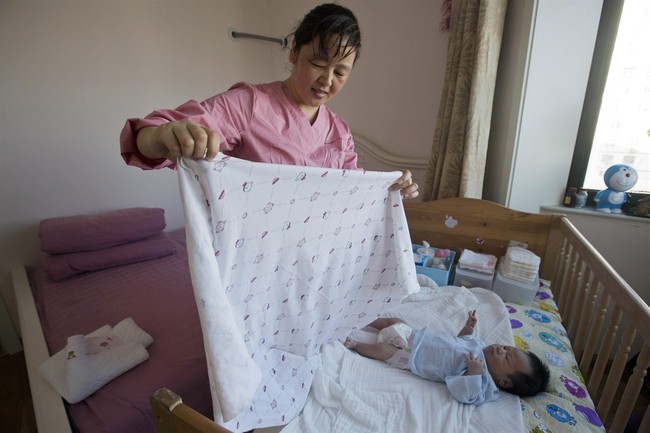We support our Publishers and Content Creators. You can view this story on their website by CLICKING HERE.

In 1980, the Chinese government instituted what became known as the “one child” policy, forbidding families from having two or more children without special permission from the government. The government in Beijing feared what they described as an impending “demographic disaster” if the nation’s population continued to grow at the current rate seen during that time. It was a brutal approach to what was being seen as an intractable problem. The rules were enforced vigorously, with many women being forced to have abortions or be sterilized. At first, the policy appeared to be having the intended effect and the country’s population growth slowed down measurably. But human nature has a way of thwarting the will of the most authoritarian government and by the time the country finally repealed the policy 36 years later, the damage had been done. Now they are facing an entirely different set of daunting challenges, all of which were wholly preventable in retrospect. The Wall Street Journal has an excellent review of how things reached their current state and the new challenge of China not having enough single women of childbearing age. (Subscription required)
Advertisement
Ricki Mudd was born in 1993 in China during the one-child policy era. She remembers her early childhood only in fragments, but has been told she had spent some of it hidden in a bag.
At age 5, she was adopted from a Chinese orphanage, one of the more than 150,000 children China sent overseas. Most were girls. In the West, they were one of the most visible consequences of the one-child policy, which ended in 2016. This month, Beijing put an end to foreign adoptions.
China is grappling with a demographic crisis, with dropping birthrates and a rapidly aging population. The policies to control the population have given way to new ones in the opposite direction. But a legacy of the one-child policy is a dearth of women of childbearing age.
Social engineering on this scale is incredibly challenging if it’s even possible over the long run. Human nature has a way of rearing its head even in the most restrictive societies and playing havoc with the grandiose plans of the government. For one thing, sons were traditionally valued more than daughters in Chinese society. That meant that if you were only allowed to have one child and it was determined to be a girl, you might go seek out an abortion or do something even worse, allowing you to keep trying until you managed to deliver a boy.
That may be a sterile, but brutal description of the situation, but that’s how it worked out. People didn’t begin to notice the downstream effects in a serious way for the first decade or more, but they certainly did when those boys matured to the age where they would typically start seeking wives of their own. At that point, it became obvious that there were nowhere near enough females of their own age for everyone to find a spouse without looking outside of the country. By 2004, census data indicated that there were 117 boys born for every 100 girls. While that may not sound like all that huge of a disparity the figure in 1980 had been 104 boys for every 100 girls. The difference added up quickly.
Advertisement
The policy impacted international adoption figures as well. In the two decades prior to the pandemic, American families adopted more than 80,000 Chinese children. Of those, more than 80% were girls. Conversely, comparatively few male Chinese babies were adopted by overseas families. The deck was stacked against the possibility of maintaining a stable population and it was all because of the government’s policies.
Most of the world is facing a decline in population growth today, with the exceptions being found primarily in Africa and South America. This is true of countries including the United States where there are no legal restrictions on the number of children a family can have nor the gender of those children. We are similarly experiencing declines in both male and female fertility. All of these factors are combined to create an environment where fewer children are being born and the average age of many nations’ populations continues to increase. So what should we be doing about this? If today’s story teaches us anything, it’s that this is not a problem to hand over to the government to be settled via regulations. The one thing that might help is fostering an atmosphere where younger people marrying and having children earlier comes back into fashion. You can’t always keep putting off the decision to have children “until you are older.” Fate is fickle, and that may no longer be an option for you at that point.

 Conservative
Conservative  Search
Search Trending
Trending Current News
Current News 






